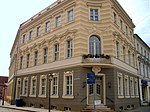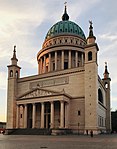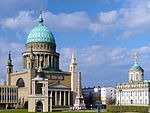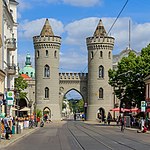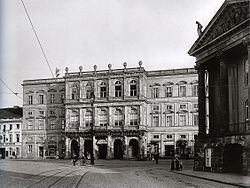Garrison Church (Potsdam)

The Garrison Church (German: Garnisonkirche) was a Protestant church in the historic centre of Potsdam. Built by order of King Frederick William I of Prussia according to plans by Philipp Gerlach from 1730 to 1735, it was considered as a major work of Prussian Baroque architecture. With a height of almost 90 metres (295 feet), it was Potsdam's tallest building and shaped its cityscape. In addition, the Garrison Church was part of the city's famous "Three Churches View" together with St. Nicholas Church and Holy Spirit Church. After it was damaged during the British bombing in World War II, the East German authorities demolished the church in 1968. After the German reunification the Garrison Church is currently being rebuilt as a centre for remembrance and reconciliation. The Garrison Church was an important place in the early modern History of Germany. Johann Sebastian Bach, Alexander I of Russia, Napoleon and others visited the building. In addition, it served as burial site of Frederick William I and his son Frederick the Great. Potsdam's first freely elected council members met in the Garrison Church, Lutheran and Reformed Protestants founded the Prussian Union of Churches in it, and classical concerts took place there. In Nazi Germany, the building was used for propaganda purposes; at the same time, many 20 July plotters belonged to the Garrison Church parish.
Excerpt from the Wikipedia article Garrison Church (Potsdam) (License: CC BY-SA 3.0, Authors, Images).Garrison Church (Potsdam)
Dortustraße, Potsdam Historische Innenstadt
Geographical coordinates (GPS) Address Nearby Places Show on map
Geographical coordinates (GPS)
| Latitude | Longitude |
|---|---|
| N 52.395833333333 ° | E 13.053611111111 ° |
Address
Kunst- und Kreativhaus Rechenzentrum
Dortustraße 46
14467 Potsdam, Historische Innenstadt
Brandenburg, Germany
Open on Google Maps


